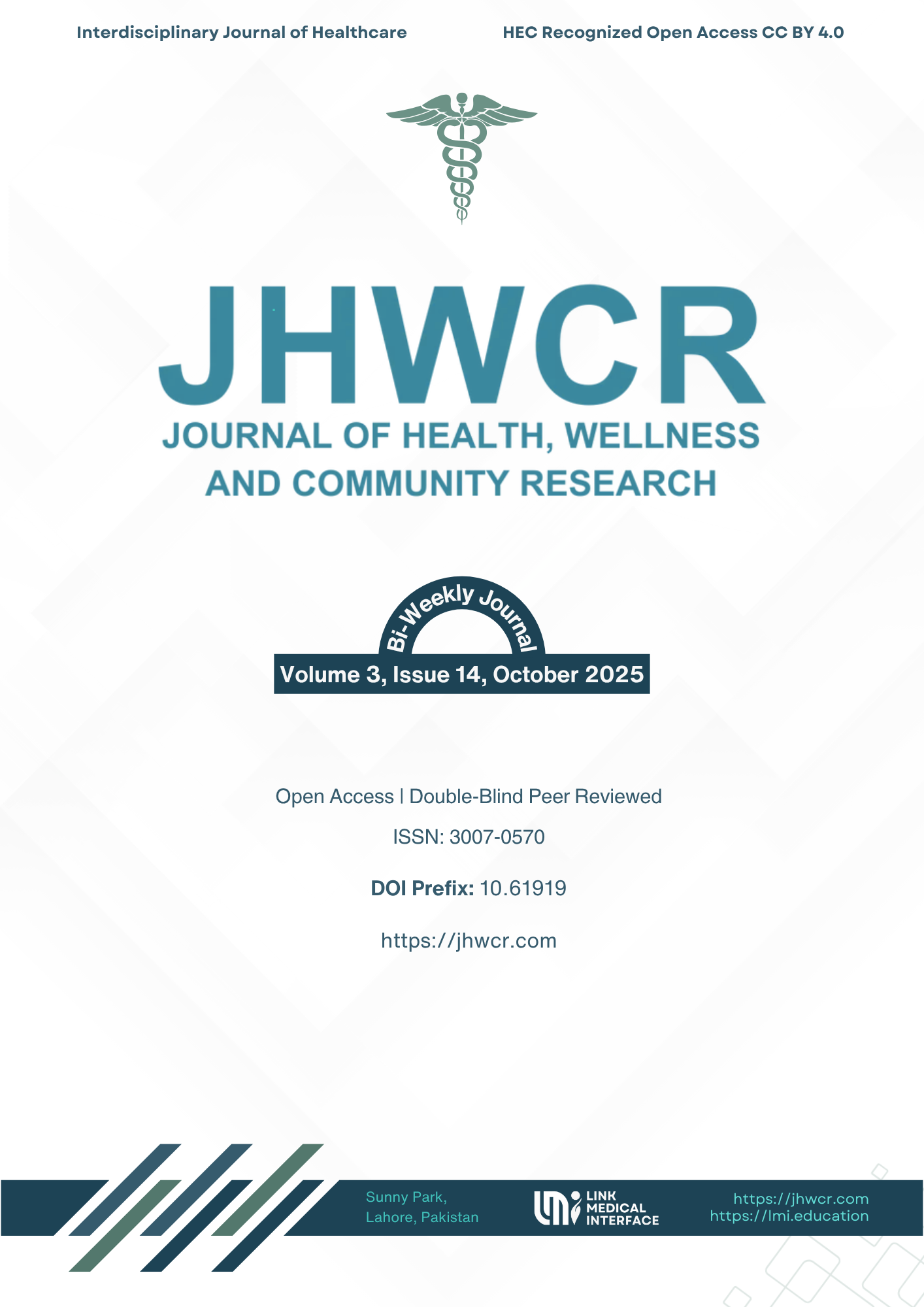Comparative Effects of Kegel and Squat Exercises on Urinary Incontinence Severity and Quality of Life
DOI:
https://doi.org/10.61919/jx0d8y18Keywords:
urinary incontinence, pelvic floor muscle training, Kegel exercises, squats, women’s health, quality of life.Abstract
Background: Urinary incontinence (UI) is a common condition among women, associated with impaired quality of life, social stigma, and increased healthcare burden. Conservative management strategies such as pelvic floor muscle training are widely recommended as first-line interventions. While Kegel exercises are the most established approach, squat-based training has been proposed as an alternative for enhancing pelvic and core muscle strength. Objective: To compare the effects of Kegel and squat exercises on urinary incontinence severity and health-related quality of life among women with UI. Methods: A randomized clinical trial (NCT07156266) was conducted at two hospitals in Faisalabad, Pakistan, enrolling 26 women aged 30–60 years with clinically confirmed UI. Participants were randomly allocated into two groups: Kegel exercise group (n=14) and squat exercise group (n=12). Both groups received baseline transcutaneous electrical nerve stimulation followed by 12 weeks of daily exercises. Outcomes were assessed using the Incontinence Quality of Life questionnaire (I-QOL) and the International Consultation on Incontinence Questionnaire-Female Lower Urinary Tract Symptoms Long Form (ICIQ-FLUTS-LF). Conclusion: Kegel exercises were more effective than squats in improving quality of life and reducing symptom severity in women with UI, supporting their role as the preferred conservative treatment.
Downloads
Published
Issue
Section
License
Copyright (c) 2025 Ayesha Sajid, Zainab Basharat, Asma Asif, Izza Ayub (Author)

This work is licensed under a Creative Commons Attribution 4.0 International License.


